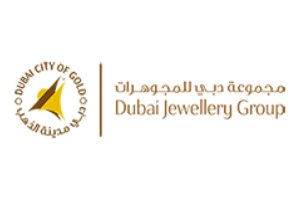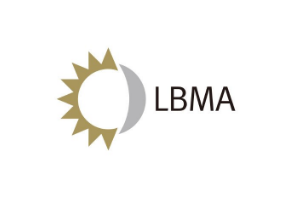Overview of gold as a precious metal
Value of gold; Gold is widely recognized as a valuable and sought-after precious metal with a long history of being used for various purposes, including jewelry, investment, and industrial applications. Its scarcity, durability, and luster have made it a symbol of wealth and luxury across different cultures and civilizations. For centuries, gold has been considered a safe haven asset during economic uncertainties and is often seen as a hedge against inflation.
Factors influencing the value of gold per kilo
Several factors influence the value of gold per kilogram in the global market. The most significant factor is **market demand**, which can be driven by various industries such as jewelry, technology, and central banks’ reserves. **Market sentiment** also plays a crucial role in determining gold’s value, with investors often turning to gold during times of political or economic instability.
| Factors | Impact on Gold Price |
| Supply and Demand | Fluctuations in supply and demand can affect the price of gold. |
| Inflation Rates | Gold is often seen as a hedge against inflation. |
| Geopolitical Events | Political uncertainty can drive investors towards gold. |
| Central Bank Policies | Decisions by central banks can impact the price of gold. |
Other factors that influence the price of gold include interest rates, currency fluctuations, and production costs. The intricate interplay between these variables contributes to the dynamic nature of the gold market and adds to its allure as a precious metal valued for its intrinsic qualities and practical applications.
Historical Performance of Gold Prices
Trends and fluctuations in the price of gold over time
Gold has exhibited various trends and fluctuations in its price over centuries. The value of gold per kilogram has been influenced by factors such as market demand, supply dynamics, geopolitical events, and economic indicators. Historically, gold prices have experienced periods of significant growth during times of economic uncertainty or inflation concerns. Conversely, during stable economic conditions or when confidence in other assets is high, the price of gold may exhibit more moderate movements.
Comparison of gold’s value against other assets
When comparing the value of gold against other assets, it is essential to consider its unique properties as a precious metal. Gold is often viewed as a store of value and a hedge against inflation, unlike volatile assets like stocks or cryptocurrencies. Additionally, the tangible nature of gold makes it a favored choice for investors seeking stability and diversification in their portfolios. Compared to real estate or bonds, gold’s liquidity and universal acceptance contribute to its attractiveness as an investment option.
Factors Impacting Gold Price
| Factors | Impact on Gold Price |
| Supply and Demand | Fluctuations in supply and demand can affect the price of gold. |
| Inflation Rates | Gold is often seen as a hedge against inflation. |
| Geopolitical Events | Political uncertainty can drive investors towards gold. |
| Central Bank Policies | Decisions by central banks can impact the price of gold. |
In addition to these factors, variables like interest rates, currency movements, and production costs also play crucial roles in determining the value of gold per kilogram in the global market. The multifaceted nature of these influences underscores the dynamic nature of the gold market and its status as a prized asset with enduring appeal.
Current Market Value of 1 Kilo of Gold
Real-time pricing of gold per kilo
The price of gold per kilogram is subject to constant fluctuations in response to various market factors. Investors and analysts closely monitor real-time updates on the value of gold as it serves as a crucial indicator of economic conditions and investor sentiment. Real-time pricing mechanisms ensure that market participants have up-to-date information on the current worth of gold, allowing for informed decision-making regarding investments and portfolio diversification strategies.
Factors affecting the current market value
Several factors influence the current market value of one kilogram of gold. Supply and demand dynamics play a significant role in determining the price, with fluctuations in mining output and consumer demand contributing to changes in value. Additionally, inflation rates impact gold prices as the metal is often sought after as a hedge against rising prices. Political instability, central bank policies, interest rates, and currency movements also contribute to the volatility observed in gold pricing. Investors must consider these multifaceted influences when assessing the current market value of gold and its potential for long-term growth or preservation of wealth.
Factors Impacting Gold Price
| Factors | Impact on Gold Price |
| Supply and Demand | Fluctuations in supply and demand can affect the price of gold. |
| Inflation Rates | Gold is often seen as a hedge against inflation. |
| Geopolitical Events | Political uncertainty can drive investors towards gold. |
| Central Bank Policies | Decisions by central banks can impact the price of gold. |
The intricate interplay between these factors highlights the dynamic nature of the gold market and underscores its enduring appeal as a valuable asset class for investors seeking stability and diversification in their portfolios.
Buying and Selling Gold in 1 Kilo Increments
Options for purchasing and selling 1 kilo of gold
When it comes to acquiring or disposing of one kilogram of gold, individuals have several options available. They can engage in transactions through bullion dealers, online platforms, or even physical auctions. Buyers may choose to purchase gold bars or coins in increments of one kilogram to add to their investment portfolios or collections. On the other hand, sellers looking to divest their holdings can opt to sell their gold through similar channels, ensuring a transparent and secure transaction process.
Considerations when buying or selling gold in bulk
Whether buying or selling gold in bulk quantities like one kilogram, individuals should consider various factors that could impact their transactions. It is crucial to assess the current market value of gold and understand the associated costs involved in purchasing or selling bullion. Additionally, individuals must evaluate the reputation and reliability of the seller or buyer to ensure a smooth and legitimate exchange of assets. Storage and security considerations also play a significant role when dealing with substantial amounts of gold, requiring individuals to secure suitable arrangements for safeguarding their valuable investments.
Factors Impacting Gold Price
| Factors | Impact on Gold Price |
| Supply and Demand | Fluctuations in supply and demand can affect the price of gold. |
| Inflation Rates | Gold is often seen as a hedge against inflation. |
| Geopolitical Events | Political uncertainty can drive investors towards gold. |
| Central Bank Policies | Decisions by central banks can impact the price of gold. |
The comprehensive understanding of these factors enables individuals to navigate the complexities of the gold market effectively when considering transactions involving one kilogram quantities.
Investing in 1 Kilo of Gold
When individuals choose to invest in one kilogram of gold, they benefit from its status as a reliable store of value. Gold has historically served as a hedge against economic uncertainties and inflation, making it an attractive asset for risk diversification. By holding physical gold in larger quantities like one kilogram, investors can enhance the stability and safety of their investment portfolios.
Strategies for incorporating gold into an investment portfolio
Integrating one kilogram increments of gold into an investment portfolio requires strategic planning. Investors can opt to allocate a percentage of their total portfolio to gold to balance risks and optimize returns. Additionally, they may consider using gold as a long-term wealth preservation tool or as insurance against market volatility. Diversifying holdings by including different forms of gold investments, such as bars or coins in one-kilogram units, can help spread risks across various assets.
Factors Impacting Gold Price
| Factors | Impact on Gold Price |
| Supply and Demand | Fluctuations in supply and demand can affect the price of gold. |
| Inflation Rates | Gold is often seen as a hedge against inflation. |
| Geopolitical Events | Political uncertainty can drive investors towards gold. |
| Central Bank Policies | Decisions by central banks can impact the price of gold. |
The comprehensive understanding of these factors enables individuals to navigate the complexities of the gold market effectively when considering transactions involving one kilogram quantities.




